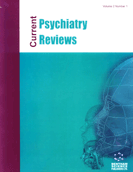Abstract
This paper describes an animal (rat) model for the study of Bipolar Disorder (BD) in humans. The paper presents research, previously unpublished, conducted over more than 25 years. The model is derived from a natural genetic variant discovered in the rat population; these rats having been all brothers and sisters (littermates) from a single litter that was observed to be hyperactive in the home cage. The original animals were first inbred and then the offsprings were selectively-bred for more than 50 generations; this line of rats that proved to be a model for BD was named the Hyperactive (HYPER) rat.
Findings presented here indicate that this rat model shows similarity to human BD with respect to the four criteria used to judge/validate any animal model of a human psychological/ psychiatric disorder: (1) etiology, (2) symptomatology, (3) underlying pathophysiology, and (4) responsiveness to treatments that are effective for the human disorder. To summarize, HYPER rats mimic manic behavior by showing an outburst of extreme hyperactivity that lasts for several days after being exposed to a stressor, and also can show pronounced and prolonged post-stress depression of home-cage activity; moreover, critical for modeling BD, HYPER rats assessed for 2-4 months show “cycling” between manic-like outbursts and depression. (Note: prolonged depression occurs in HYPER rats after a single acute stressor event and therefore represents the first rat model to meet the DSM criterion for appropriate duration of depressive symptoms [persisting for more than 14 days] following a discrete precipitating event). The HYPER rat also manifests other characteristics seen in human BD – high levels of anxiety, a hyper-responsive pituitary-adrenal axis, elevated consumption of alcohol, anhedonia (indicated by reduced propensity to consume highly palatable sucrose solutions), cognitive differences from normal animals, abnormal midbrain dopaminergic transmission, and skin lesions that point to genetic similarity to humans with BD. Finally, the behavioral abnormalities of HYPER rats that mimic BD also respond to drugs used in the treatment of BD in humans; their manic-like outburst of extreme hyperactivity when exposed to stress is blocked by treatment with lithium or valproate. Lithium treatment also reduces “cycling” of HYPER rats that results in fewer cycles and less severe cycling. The HYPER rat model shows the most extensive list of similarities to human BD reported to date. Insofar as this model was not produced experimentally but instead arose as a natural genetic variant, thereby reproducing human BD in this important respect, this would seem to add considerably to its attraction as a model of BD. The promise of the HYPER rat is that it embodies critical aspects of human BD in a rodent. A Summary Table listing all phenomena observed in the HYPER rat relevant to human BD can be found near the conclusion of this article. In view of the behavioral similarities shown by the HYPER rat to critical behavioral characteristics of BD in humans, the HYPER rat would seem extremely useful as a means to test/screen potential new treatments for BD. Additionally, apparent similarities of pathophysiology and indications of similar genetics of the HYPER rat to human BD supports its study to look for underlying causes of BD, and also its use in genetic investigations where it can be employed using some of the latest techniques, such as transcriptomics and RNA-Seq analysis, that are presently not possible in humans.Keywords: Bipolar disorder, animal model, mania, depression, rat, lithium, valproate, cycling.
 38
38 6
6

